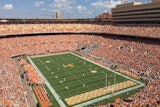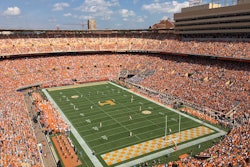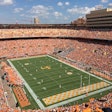
Up until 2010, accessible design standards for many components of a parks and recreation system — including fitness equipment, swimming pools, playgrounds, picnic areas and hiking trails — were not included in the Americans with Disability Accessibility Guidelines (ADAAG) of 1991. ADAAG was updated in 2010 to scope all these elements and more. A lot of people don’t realize that. And to this day, many people still believe that complying with ADA standards simply means providing wheelchair accessibility.
No wonder my colleague on the National Recreation and Park Association’s Business Council, John McGovern — accessibility principal-in-charge at WT Group, an engineering consultancy in Hoffman Estates, Ill. — said during an accessibility workshop we presented at the NRPA Annual Conference last fall that an ADA transition plan is one of the most overlooked requirements of CAPRA (NRPA’s quality assurance accreditation).
The ADA standards for design apply to individuals with physical, intellectual and developmental disabilities that include mobility challenges, vision and hearing impairments, and sensory and dexterity difficulties. Federal agencies and state governments provide various design guidelines, and some states have more stringent requirements than others. Some even have stringent enforcement requirements. That said, a state’s building code or standards cannot be less restrictive than federal ones.
For example, in Texas, where BSW Architects is located, a Registered Accessibility Specialist licensed by the Texas Department of Licensing and Regulation must be engaged on all construction projects costing more than $50,000 to ensure compliance with Texas Accessibility Standards. All projects must go through an accessibility plan review in order to receive a building permit and are also inspected for compliance within a year of completion.
Similarly, California has its own state building code that includes accessibility requirements in ways more stringent than federal ADA guidelines. The state or local authority having jurisdiction is therefore charged with enforcing the state code. Same thing in Florida, and states such as Illinois, New York, New Jersey and Massachusetts have their own standards or procedures, too.
At the other end of the spectrum are states that don’t independently regulate ADA at all. Instead, they simply leave enforcement up to federal guidelines and civil courts. If you’re building or renovating in a state without its own procedural enforcement, it still behooves you and your design team to apply the latest applicable accessibility standards. Doing so will help protect you as an owner if a future lawsuit claims ADA-related shortcomings.
In other words, if a facility (or a given space within that facility) was documented as meeting the ADA design guidelines in place at the time it was built, the concept of safe harbor generally will provide reasonable defense and meet professional standard of care in case bringing it up to newer standards is not feasible. On the other hand, if all that is required to come into compliance is, for example, correcting a few mounting heights of elements, you’ll have to implement the necessary changes.
With outdoor recreation components like picnic areas, beach access spaces and hiking trails, ADA design standards typically apply only if the property in question is within National Forest System (NFS) boundaries. Again, though, I recommend adhering to those standards even if not a federal project. That way, in the event of a complaint, you would be able to demonstrate that applicable design standards in place at the time of design and construction were followed.
I also recommend, especially for substantial projects such as a new rec center, that design plans undergo review by an accessibility consultant. This is inexpensive and documents a good-faith effort at compliance. Better yet, any issues that are discovered can be addressed before they are built.
At the very least, make sure accessibility-related reviews are part of a project’s punch list process. It’s much easier to make any necessary adjustments while the contractor and subcontractors are still on the job versus attempting to bring them back six months or a year after the project was completed.
If some of the procedures regarding adherence to and enforcement of ADA standards seem confusing, it’s because they are. That said, being well-versed in your state rules and federal guidelines — and designing for compliance, regardless of local enforcement policies and procedures — will ensure your new and renovated facilities are accessible and enjoyed by everyone.
Stephen Springs, FAIA, is a senior principal at Brinkley Sargent Wiginton Architects in Dallas, Texas.





































